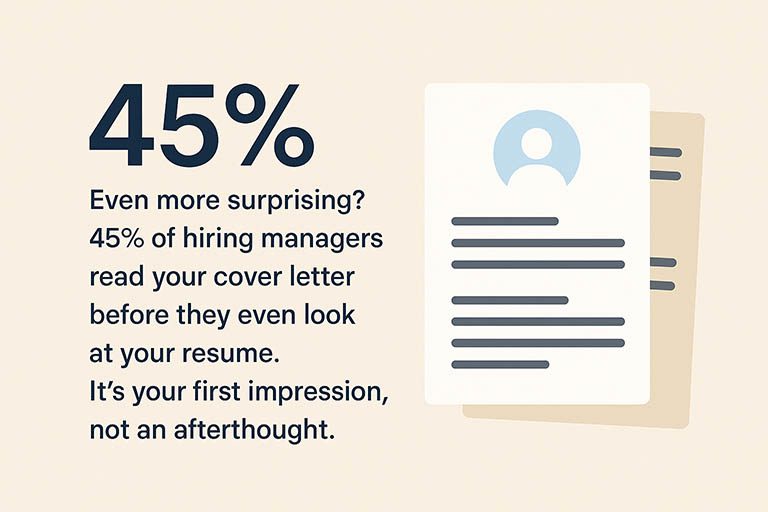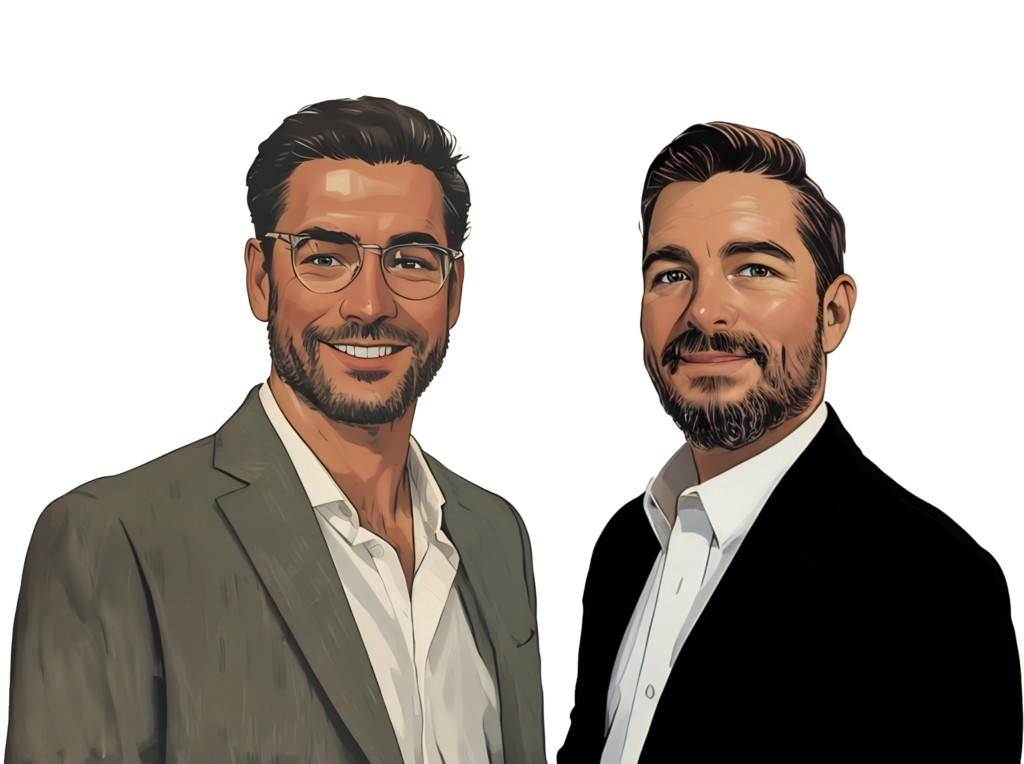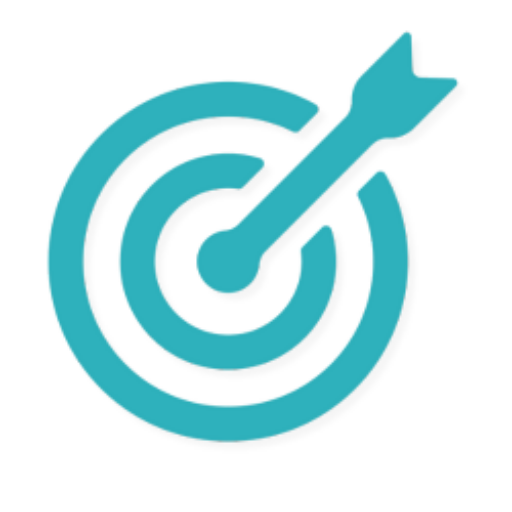The 3-Paragraph Cover Letter Formula That Hiring Managers Actually Read
Did you know that 83% of hiring managers actually read the cover letters they receive? That’s right—despite what you might have heard about cover letters being obsolete, the vast majority of decision-makers are still reviewing them before making interview decisions, according to a 2023 survey of 625 hiring managers across the U.S. by Resume Genius.
Even more surprising? 45% of hiring managers read your cover letter before they even look at your resume. It’s your first impression, not an afterthought.
But here’s the problem: Most job seekers are writing lengthy, generic cover letters that put hiring managers to sleep faster than a PowerPoint presentation on printer maintenance. When nearly half of hiring managers spend between 30 seconds and 2 minutes on each cover letter, you can’t afford to waste a single word.

That’s why we’ve developed this proven 3-paragraph formula that cuts through the fluff and delivers exactly what hiring managers want to see. This approach has helped thousands of job seekers land interviews at competitive companies by making their cover letters impossible to ignore.
Learn how to tailor your entire application package with our Resume Tailoring Formula to create a cohesive, compelling case for your candidacy.
☑️ Key Takeaways
- The 3-Paragraph Cover Letter Formula gives you a clear, effective structure that’s easy for recruiters to read quickly.
- Paragraph 1 hooks attention with enthusiasm and a tailored reason for applying, ideally referencing the company or role.
- Paragraph 2 highlights a key achievement or skill, showing how your experience directly matches what the employer needs.
- Paragraph 3 wraps with a confident close, reiterating your interest and inviting the hiring manager to follow up.
Why Traditional Cover Letters Fail (And Why Brevity Wins)
The Harsh Reality of Hiring Manager Attention Spans
Let’s talk about the uncomfortable truth: hiring managers are overwhelmed. The average corporate job posting receives 250 applications, with some attractive positions drawing thousands of applicants.
With this volume, hiring managers simply don’t have time to read multi-page cover letter manifestos from each candidate. Research shows that 60% of hiring managers spend two minutes or less reading cover letters, with 36% spending under 30 seconds per letter.
In this environment, length isn’t impressive—it’s a liability. Longer cover letters actually decrease your chances of getting noticed because they’re more likely to be skimmed or skipped entirely.
What Happens to Your Cover Letter After You Submit
Most job applications now go through Applicant Tracking Systems (ATS) before a human ever sees them. While these systems primarily scan resumes, they also process and store cover letters.
When a hiring manager reviews applicants who’ve made it through the initial screening, they typically see your cover letter alongside your resume. The difference? Your resume gets a guaranteed look, while your cover letter gets opened only if it seems worth the time investment.
Contrary to popular belief, ATS systems don’t automatically reject resumes based on arbitrary factors. Instead, they rank candidates for human review—and that’s where a concise, compelling cover letter can lift you above similarly qualified candidates.
Interview Guys Tip: Most hiring managers will only give your cover letter a quick glance to determine if it’s worth a deeper read. Frontload your value in the first few lines, not buried in paragraph four. If they can’t immediately see why you’re relevant, they’ll move on to the next candidate.
Still using an old resume template?
Hiring tools have changed — and most resumes just don’t cut it anymore. We just released a fresh set of ATS – and AI-proof resume templates designed for how hiring actually works in 2025 all for FREE.
The Power of the 3-Paragraph Structure
Paragraph 1: The Hook (Your Attention-Grabbing Introduction)
The first paragraph has one job: make the hiring manager want to read the second paragraph. That’s it.
In 75-85 words maximum, you need to:
- Immediately establish relevance to the specific position
- Demonstrate knowledge of the company’s current situation or needs
- Signal authentic enthusiasm (without sounding desperate)
- Include a value-focused thesis statement that previews what you bring
Forget generic openers like “I’m writing to apply for…” Instead, try these powerful hook templates:
The Direct Value Hook: “After generating $1.2M in new business for XYZ Corp through strategic social media campaigns, I’m excited to bring my data-driven marketing approach to Growing Company’s expansion into the B2B space.”
The Company Knowledge Hook: “When I read about Growing Company’s challenges with customer retention in last month’s interview with your CEO, I immediately thought of the retention program I developed that reduced churn by 37% at my current company.”
The Shared Mission Hook: “As a sustainability advocate who’s diverted over 15 tons of waste from landfills, I was thrilled to see Growing Company’s commitment to becoming carbon-negative by 2026. My experience implementing zero-waste programs could help accelerate your timeline.”
Notice how each of these immediately signals specific value and relevance, not just generic interest in the position.
Paragraph 2: The Proof (Your Value Proposition)
The second paragraph is where you deliver concrete evidence that you can solve the employer’s problems. This is not a summary of your resume—it’s a carefully curated selection of your most relevant accomplishments.
In 100-125 words maximum:
- Highlight 2-3 specific achievements directly relevant to this role
- Quantify your impact whenever possible (numbers, percentages, dollar amounts)
- Connect your achievements to the company’s needs
- Show, don’t tell—use concrete examples instead of adjectives
For example, rather than saying “I have strong leadership skills,” write: “While managing a team of six analysts during our company’s reorganization, I maintained team productivity at 98% while reducing turnover to zero—the only department to achieve both metrics.”
Paragraph 3: The Action (Your Confident Closure)
Your final paragraph should create forward momentum toward an interview. In 50-60 words maximum:
- Restate your enthusiasm for the specific role and company
- Include a confident call-to-action regarding next steps
- Express availability and willingness to provide additional information
- Maintain a tone of certainty (not hope) about being a good fit
Avoid weak closings like “I hope to hear from you soon” or “Thank you for your consideration.” Instead, try: “I’m excited to discuss how my experience reducing customer acquisition costs by 42% can help Growing Company reach its Q3 goals. I’m available for an interview at your convenience and can be reached at (phone) or (email).”
The key psychology behind this paragraph is assuming the conversation will continue rather than begging for a chance.
Interview Guys Tip: The perfect cover letter doesn’t just tell your professional story—it tells the hiring manager why that story matters to them. For every sentence you write, ask yourself: “Does this show them how I’ll solve their specific problems?” If not, delete it and replace it with something that does.
Crafting Your Perfect First Paragraph
Research Techniques for Compelling Openings
The most effective hooks demonstrate company knowledge that goes beyond the job description. Invest 15-20 minutes in research before writing:
- Review the company’s website, focusing on their About page and recent Press Releases
- Check their LinkedIn company page for recent updates
- Search for recent news articles about the company
- Look up the hiring manager on LinkedIn to understand their background
- Research industry challenges that might be affecting the company
This research helps you identify specific pain points you can address in your opening paragraph.
For example, if you discover they recently launched a new product line, you might open with: “Having successfully launched three product lines that exceeded first-year revenue targets by an average of 28%, I was particularly interested in Growing Company’s entry into the sustainable packaging market.”
Opening Templates That Get Attention
Here are four proven first paragraph templates you can customize:
The Direct Value Opener: “With [X years/specific experience] in [relevant field], delivering [specific measurable results], I’m excited to bring my expertise in [key skill] to [Company Name]’s [specific challenge or opportunity they’re facing].”
The Passion + Purpose Opener: “As a [professional identity] who has [notable achievement], I was drawn to [Company Name]’s mission to [company goal] because [personal connection to their mission].”
The Network Connection Opener: “After speaking with [Name], [their position] at [Company], about your need for [job function], I’m confident my background in [relevant experience] makes me an ideal candidate for the [Position] role.”
The Company Knowledge Opener: “When I read about [Company Name]’s recent [initiative/challenge/announcement], I immediately thought of how my experience [related achievement] could help you [desired outcome].”
First Paragraph Customization Strategies
To quickly tailor your opening paragraph for different applications:
- Create a “master” version for each type of role you’re targeting
- Develop a swappable “company research” sentence you can customize
- Keep a spreadsheet of company-specific details to insert
- Use the job description to identify 2-3 key requirements to reference
This approach allows you to create highly customized openings in minutes rather than starting from scratch each time.
Interview Guys Tip: Save your cover letter as a PDF before submitting unless specifically asked for another format. This preserves your formatting across all devices and prevents any unintended changes to your carefully crafted document.
Building a Powerful Second Paragraph
The Accomplishment Selection Framework
Not all achievements are created equal. Use this framework to select which accomplishments to feature:
- Relevance: How directly does it relate to the target job?
- Recency: How current is the achievement?
- Impact: How significant were the results?
- Uniqueness: How much does it differentiate you from others?
- Verifiability: Can it be confirmed by references?
Prioritize achievements that score highest across these five criteria, with particular weight on relevance and impact.
For technical roles, focus on specific projects, technologies, and measurable outcomes. For leadership roles, emphasize team impacts, strategic initiatives, and business results.
Quantification Techniques for Any Role
Even in roles where metrics seem hard to find, you can quantify your value:
- Scale indicators: “Managed a portfolio of 45+ clients” or “Coordinated events with 500+ attendees”
- Frequency markers: “Processed 200+ transactions daily” or “Published 4 articles weekly”
- Comparison metrics: “Completed projects 15% faster than team average”
- Resource efficiency: “Reduced required staff hours by 25% through process improvements”
- Satisfaction measures: “Maintained 98% positive client feedback score”
When exact numbers aren’t available, use ranges or estimates with qualifiers like “approximately” or “more than” to maintain credibility.
Addressing Potential Objections Subtly
Use your second paragraph to preemptively tackle concerns a hiring manager might have:
- Career transitions: “While transitioning from marketing to sales, I leveraged my campaign analysis skills to identify high-value prospects, resulting in 42% higher conversion rates than team average.”
- Employment gaps: “During my professional development sabbatical, I completed three certifications and designed a volunteer program that now serves 200+ community members.”
- Limited experience: “Though new to team leadership, I successfully coordinated 4 cross-functional projects that delivered 20% ahead of schedule by applying my strengths in relationship building and project management.”
The key is addressing the potential concern through achievements rather than drawing explicit attention to the issue.
Crafting a Third Paragraph That Drives Action
Psychology of Effective Closing Statements
Your closing paragraph should create psychological momentum using these principles:
- Reciprocity: Offer something valuable (your specific expertise) to create a sense of exchange
- Consistency: Reference something specific from the job listing to trigger their commitment to their own stated needs
- Social proof: Subtly suggest others have validated your abilities (“I’ve consistently been recognized for…”)
- Scarcity: Imply limited availability without being arrogant (“While exploring several opportunities…”)
These psychological triggers make hiring managers more likely to take the next step.
Follow-up Indications That Work
Include clear next-step language that makes it easy for the hiring manager to continue the conversation:
- “I’m available for a conversation next week and can arrange my schedule to accommodate yours.”
- “I’ll follow up next Tuesday to answer any questions about my application.”
- “I’m happy to demonstrate my [relevant skill] in a practical assessment if helpful.”
Specific language about follow-up shows professionalism and confidence without being pushy.
Final Impression Optimization
Optimize these often-overlooked elements in your closing:
- Signature: Include a professional sign-off (“Sincerely” or “Best regards”) followed by your full name
- Contact information: List phone and email even if already on your resume
- Digital elements: Consider including LinkedIn URL or portfolio link
- Call-to-action positioning: Place your interview request as the second-to-last sentence, not the very last
These small details reinforce your professionalism in the final moments of contact.
Full Cover Letter Example: Marketing Manager Position
Dear Hiring Manager,
After increasing customer engagement by 43% through data-driven marketing campaigns at TechForward Inc., I was intrigued by GreenGrowth’s recent expansion into the sustainable technology sector. Your emphasis on community-focused marketing initiatives, as mentioned in your CEO’s recent interview with Tech Monthly, aligns perfectly with my approach of building brand loyalty through authentic community connections.During my tenure as Senior Marketing Specialist at TechForward, I orchestrated a complete redesign of our digital marketing strategy that reduced customer acquisition costs by 31% while increasing qualified lead generation by 27% year-over-year. Additionally, I led a cross-functional team that launched our award-winning “Tech for Good” campaign, which garnered 3.8 million impressions and resulted in a 52% increase in positive brand sentiment according to our NPS tracking. My experience implementing marketing automation tools also helped streamline our workflow, saving the marketing department approximately 22 hours per week.
I’m eager to discuss how my experience in driving measurable marketing results through data-driven strategies could help GreenGrowth achieve its Q3 goals for market penetration in the renewable energy space. I’m available for an interview at your convenience next week and can be reached at (555) 123-4567 or jane.smith@email.com. I’ll follow up next Thursday to answer any questions about my application.
Sincerely,
Jane Smith
Put This Formula to Work Today
The 3-paragraph cover letter works because it respects the hiring manager’s time while delivering exactly what they need to make a decision. It’s not about being brief for brevity’s sake—it’s about being concise for impact’s sake.
Remember, 49% of hiring managers say a strong cover letter can secure an interview for a candidate with a relatively weak resume, according to Resume Genius research. Your cover letter isn’t just a formality—it’s a powerful tool that can open doors even when your experience isn’t a perfect match.
Start by creating your 3-paragraph template today, then customize it for each application using the techniques we’ve covered. Focus on quality over quantity, relevance over comprehensiveness, and specificity over generalities.
A well-crafted cover letter might take slightly longer to create, but the investment pays off in more interviews and ultimately, better job offers.
Your next interview could be just three paragraphs away.
Still using an old resume template?
Hiring tools have changed — and most resumes just don’t cut it anymore. We just released a fresh set of ATS – and AI-proof resume templates designed for how hiring actually works in 2025 all for FREE.

BY THE INTERVIEW GUYS (JEFF GILLIS & MIKE SIMPSON)
Mike Simpson: The authoritative voice on job interviews and careers, providing practical advice to job seekers around the world for over 12 years.
Jeff Gillis: The technical expert behind The Interview Guys, developing innovative tools and conducting deep research on hiring trends and the job market as a whole.
